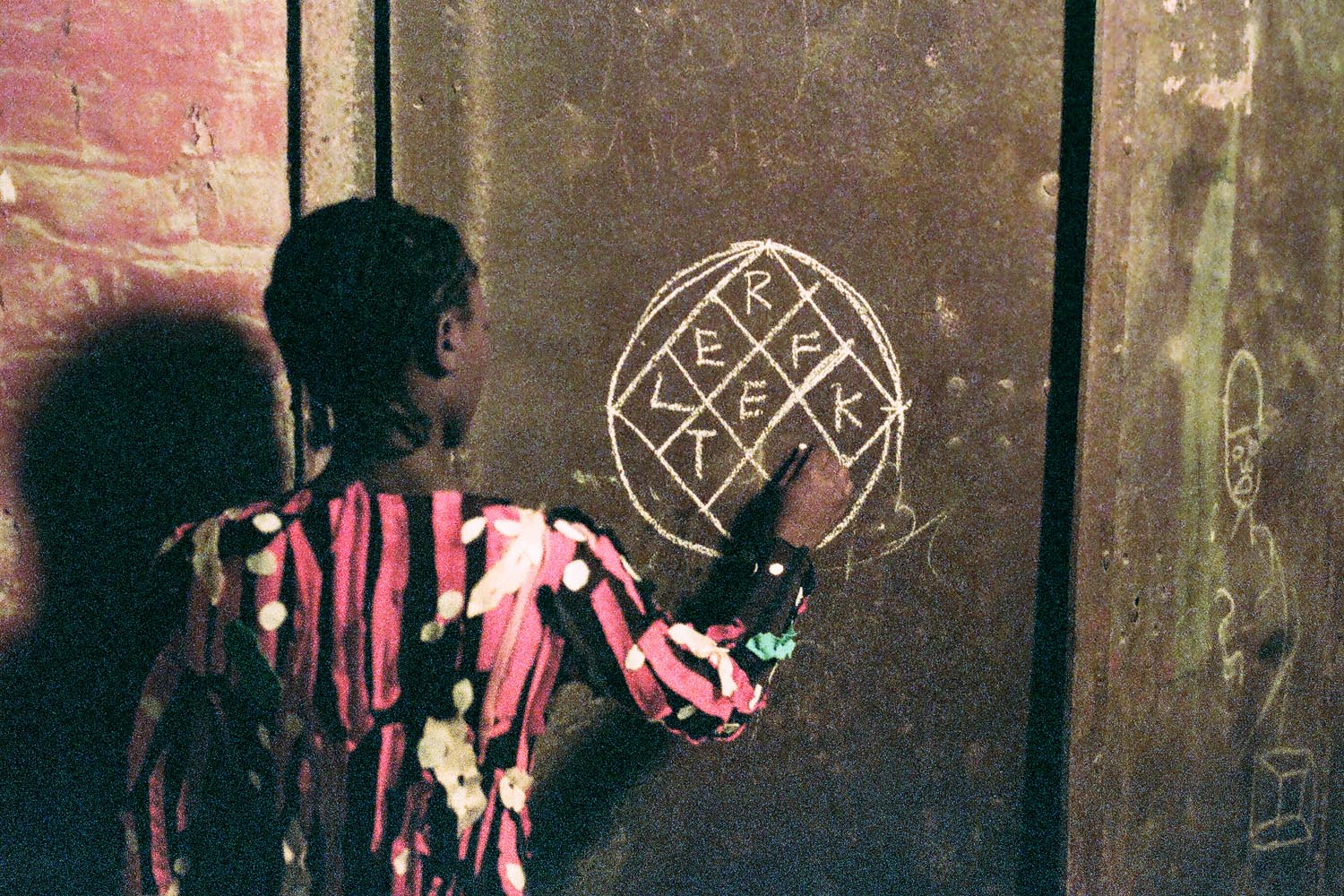
Imagine watching a music video and simultaneously directing it. Vincent Morisset, a self-described “web-friendly” director, in collaboration with Aaron Koblin, a digital artist at the Google Creative Lab, have made this seemingly sci-fi scenario a reality. Just a Reflektor (best viewed in Google’s Chrome browser) is an interactive short film tied to “Reflektor,” the title track from the upcoming new album by the Montreal-based band Arcade Fire. (David Bowie sings backup vocals on the track.)
The project works by pairing your phone to your computer through its webcam. Your gestures with the phone shift the filters and focus of the video (filmed in Haiti) tracking the journey of “a young woman who travels between her world and our own.” Altering the entire look and feel of the video in real time, the viewer can make each viewing experience completely unique and immersive. The software is open source and available online. Here, Morisset writes for LightBox about the origin and evolution of the project.
In 2011, I met Aaron Koblin at OFFF in Barcelona. We promised ourselves that we would work together one day. Last fall, Aaron and I started to ping-pong some ideas. We were quite excited about the potential of connecting devices through Web sockets. From the very beginning, we knew that we wanted to explore that notion of connection in storytelling. My genius developer, Édouard Lanctôt-Benoit, had the idea of displaying a tracker on the phone and using camera vision from the computer to track it.
We pair this information with gyroscope and accelerometer data sent through the network. This set-up allows us to determine where we’re holding the phone and how to handle it. I didn’t wanted to transform the phone into a remote control or a game pad, though. I thought it could be more interesting if the phone became a source of light, giving the illusion that we have a small video projector in our hand beaming images on to the computer screen’s surface. I wanted to recreate something that feels analog and optical. Bringing back the visceral pleasure of playing with a flashlight, a prism or shadow puppets.
Again, by a strange coincidence or synchronicity, Arcade Fire was recording at that time a song called “Reflektor.” It was the perfect fit thematically! The lyrics became the foundation of the project. For me, this song is a quest for truth, a metaphor about representation and identity. I thought about Plato’s Cave. The actual interaction was now part of the message. We created an invisible wall in the physical space, with the spectator on one side, the protagonist trapped in the screen on the “other side.” Fiction and reality colliding. This was also something I wanted to explore — combining documentary-style shooting with an imaginary world. To create a clash, in a sense, between the first, interactive half of the clip and the end, where the spectator is invited to let go.
Caroline Robert, Brandon Bloomeart, Édouard Lanctôt-Benoit and I spent months in our studio in Montreal to figure out the interactivity, the esthetic and general story of the film, playing with optical toys, coding prototypes — the pieces of the puzzle slowly snapped together and the storyboard was crafted through this process.
Haiti has always been a great source of inspiration for the band. It seemed natural to set the story there. Again, to create a contrast between our world and another fascinating one.We went to Jacmel, the cultural capital of Haiti and host of one of the most exciting carnivals in the world. Our journey there was amazing.
We had the help of the local film school, Ciné Institute, who guided us in the city and gave us a big hand on the actual production. Axelle “Ebony” Munezero is the protagonist in the clip and the choreographer. Through her dance and presence, she combined pure beauty and fierce passion. It was also a great honor to collaborate with the Google Creative Lab. Aaron is an amazing creative director who deeply understands this medium. He gave us a lot of trust. The dev team there helped with network and sound synchronization. They also built the user interface for the tech page. At London-based production company Unit9, producer Amelia Roberts and lead developer Maciej Zasada were a key part of the project. Finally, the film shoot was taken care by Sach Baylin-Stern from Antler Films.
Vincent Morisset is a director and new media storyteller based in Montreal.
Arcade Fire’s Reflektor is available through Merge Records from Oct. 29, 2013.
More Must-Reads From TIME
- The 100 Most Influential People of 2024
- The Revolution of Yulia Navalnaya
- 6 Compliments That Land Every Time
- What's the Deal With the Bitcoin Halving?
- If You're Dating Right Now , You're Brave: Column
- The AI That Could Heal a Divided Internet
- Fallout Is a Brilliant Model for the Future of Video Game Adaptations
- Want Weekly Recs on What to Watch, Read, and More? Sign Up for Worth Your Time
Contact us at letters@time.com